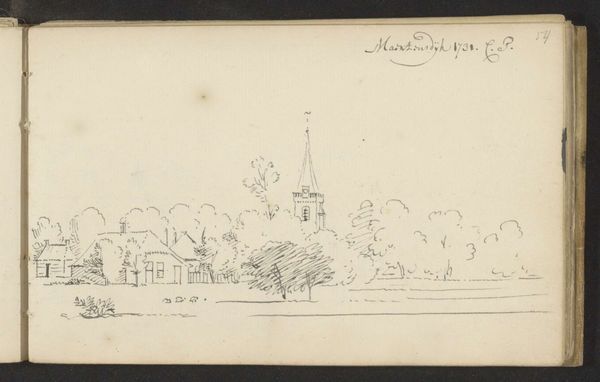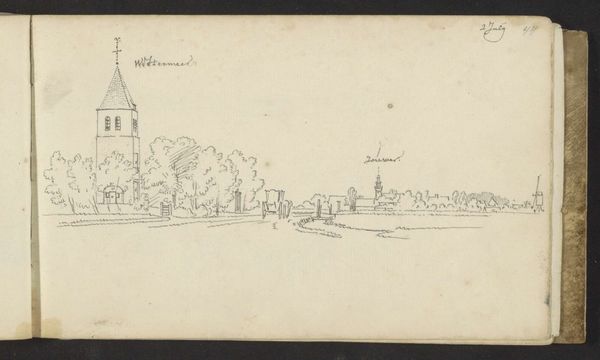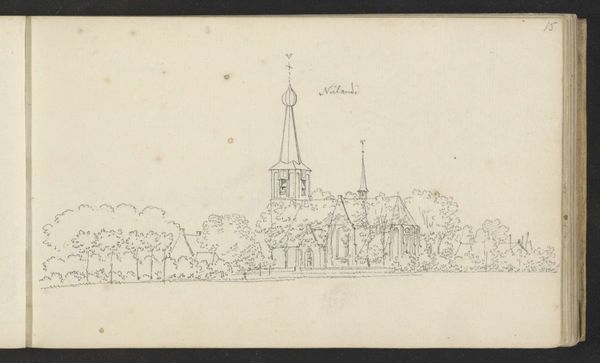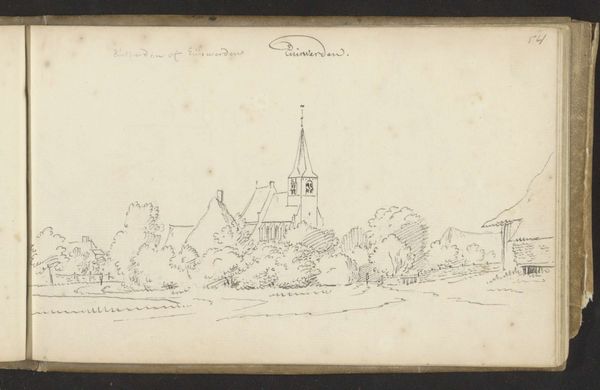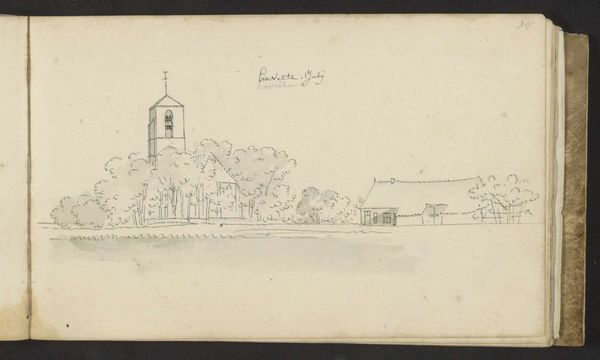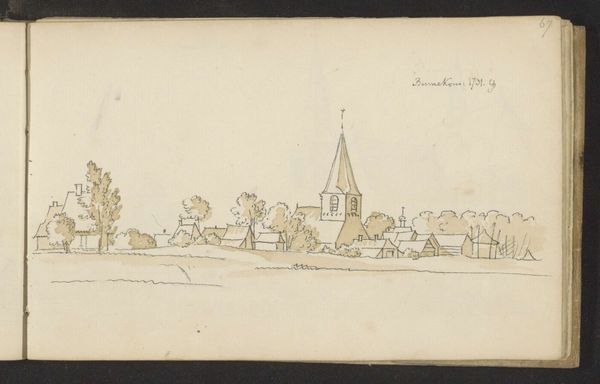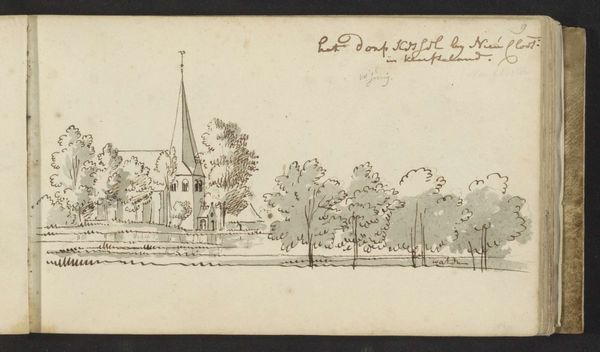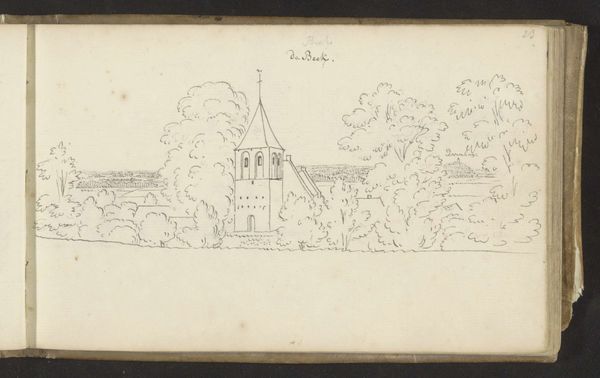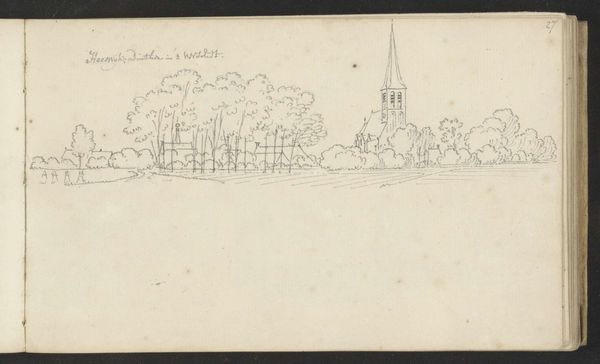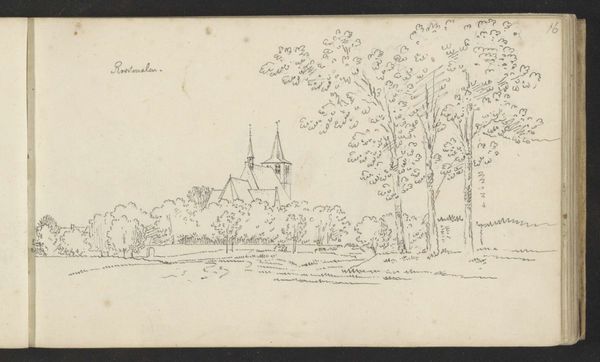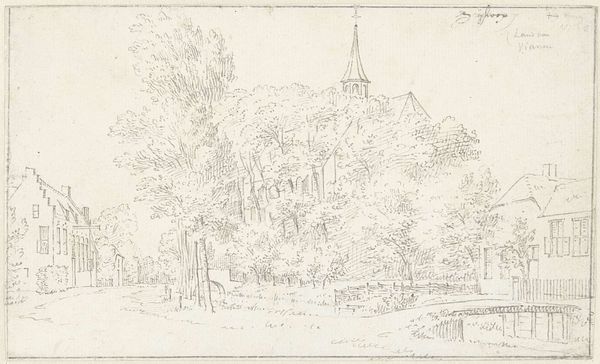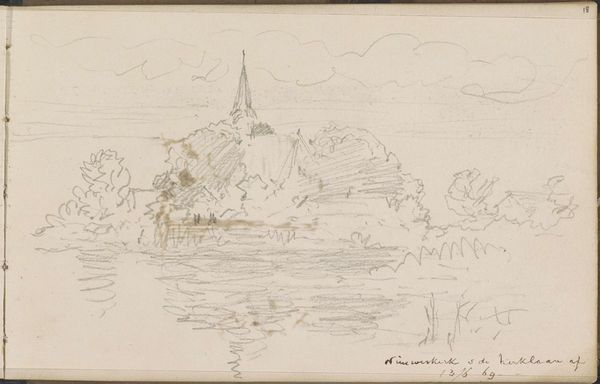
drawing, pencil
#
drawing
#
baroque
#
landscape
#
pencil
#
cityscape
Copyright: Rijks Museum: Open Domain
Curator: Welcome. Today, we're looking at a pencil drawing from between 1701 and 1759 by Cornelis Pronk, titled "Gezicht op Dinther," which translates to "View of Dinther." It’s currently held at the Rijksmuseum. Editor: It’s quite subtle, almost ghostly. The delicate pencil work captures the essence of a Dutch townscape with an ethereal quality. I see the church tower, dominant and reaching upwards, balanced by what looks like modest homes nestled in the landscape. Curator: Indeed. Pronk was known for topographical drawings like this. He meticulously documented various locations, providing visual records that are now valuable historical resources. It’s Baroque in its attention to detail, albeit restrained by the medium. We need to appreciate how the expansion of the Dutch Republic, and increasing power of centralized governance demanded artists to make accessible documents. Editor: That contextualization is vital. What I immediately find myself thinking about is accessibility and power… Look at how the church commands visual authority within the frame. How might this relate to shifts in power dynamics, class and social control within 18th-century Dutch society? Are we simply admiring aesthetics, or confronting institutional dominance? Curator: It’s both, isn't it? These views were commissioned, often by wealthy patrons and local governments. The detailed rendering suggests a desire to capture and, in a sense, control the image of their domain, mirroring their broader ambitions. These images helped to reinforce their identities. The image becomes almost a simulacrum of governance and therefore legitimacy. Editor: And perhaps that legitimacy is exactly what Pronk and the Dutch elite wanted to project and have it documented, in an almost Baroque sense, of showing-off power. But look how ephemeral this projection actually is. The delicacy of the pencil, the lightness of the sketch suggests the fragility and transient nature of that same authority. I think this creates some much-needed space for further discussion around its colonial powers. Curator: That’s an interesting reading. I appreciate how you link that with colonial impact as a direct output. It urges us to look critically at landscape art and how that image creates and justifies political, historical and social narratives. Editor: Thank you. And I really agree, you framed that very effectively for us to rethink art institutions and their functions of commissioning work to fulfill such narrative. Curator: This really is a remarkable study in art’s ability to embody those subtle interactions within historical framework. Editor: Absolutely. Thank you for walking us through it.
Comments
No comments
Be the first to comment and join the conversation on the ultimate creative platform.
